The gorgeous and remote Myeik (or Mergui) Archipelago lies in the Andaman Sea off the coast of southern Myanmar. To visit these extraordinary islands who will need to join a guided tour and they remain largely undiscovered by tourists, which is a big part of their appeal – indeed many of them are inhabitated only by colourful wildlife.
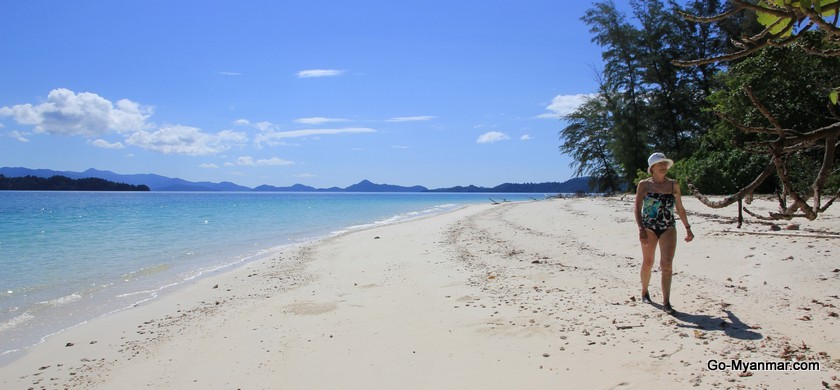
Made up of more than 800 islands which vary in size from smaller ones with just a few palm trees to larger islands of several hundred square kilometres, the archipelago offers great opportunities for exploration and diving amongst spectacular marine life and untouched coral reefs, with yachts and cruise boats designed for that purpose.
It is not just the scenery (under water or over water) that makes the Myeik Archipelago such a fascinating place to visit: the Moken people, also known as the Salone or sea gypsies, are one of the most distinct of Myanmar’s many ethnic groups, living a nomadic, sea-based life here. Having adapted themselves to the water over many hundreds of years, they are the masters of free diving, being able to focus their vision under water and hold their breath far longer than most humans can.
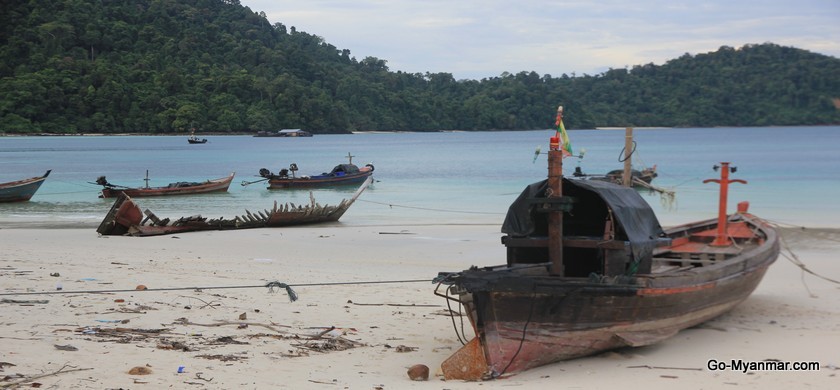
Island highlights
The islands of the Myeik Archipelago offer a wide variety of sights and adventurous activities, from hiking through tropical valleys to kayaking through mangroves and up rivers; the opportunities for exploration are almost limitless. And if you are after a more laid back time, you can simply jump in the water from your boat or wander along any of the hundreds of deserted white sand beaches.
A hugely diverse range of wildlife can be found on the islands, including monitor lizards, pythons, civets, chevrotains, gibbons and crab-eating macaques. Up in the air, the colourful diversity is perhaps even greater: you can see hornbills, white-bellied sea eagles, while kites, kingfishers, eastern reef herons, emerald doves, to name but a few of the species that circle the islands.
There are far too many islands in the archipelago to describe here (and many have never been set foot on by foreigners), but here are some of the highlights:
- Lampi Island. Established in 1995 as Myanmar’s first marine national park, Lampi is one of the most popular islands for visitors to the archipelago, rich as it is in biodiversity, mangroves and coral reefs. Lampi River offers a great chance for kayaking – and to witness some of the area’s exotic flora and fauna. Lampi is also known sometimes known as Sullivan Island or Kyun Tan Shey ('kyun' means island in Burmese).
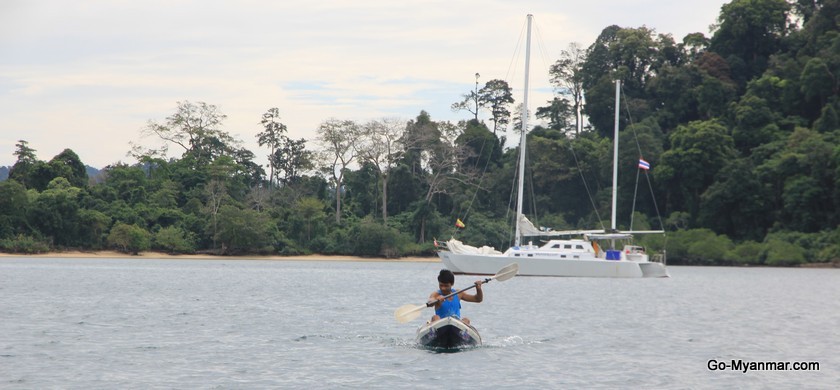
- 115 Island. Also known as Frost Island, this has a white sandy beach with crystal clear waters that are rich in hard coral and have thousands of sea urchins and small colourful tropical fish darting around. 115 Island offers opportunities for snorkelling, kayaking – and jungle trekking on the island itself.
- Nyaung Wee Island (also known as Buda island). Host to a number of Moken villages, visiting this beautiful area gives you the opportunity to talk to the locals and find out about their unique culture – and about their changing way of life. Sadly, they are increasingly living in villages rather than on the water (sometimes having even having been forcibly moved to the mainland), as the government prohibited the traditional fashioning of their wooden boats from trees.
- Phi Lar island. Otherwise known as Great Swinton, this island has a number of totally uninhabited, white sand, palm-fringed beaches – and some particularly colourful coral reefs that are perfect for snorkeling.
- Myauk Ni Island provides another opportunity to chat with the islanders about their daily lives. They see very few tourists, mainly just the fishermen who come to buy what they need, and maybe have a drink. No trinkets or hard sell in this part of the world!
For a wider range of photos from the Myeik Archipelago, visit our Flickr photo set.
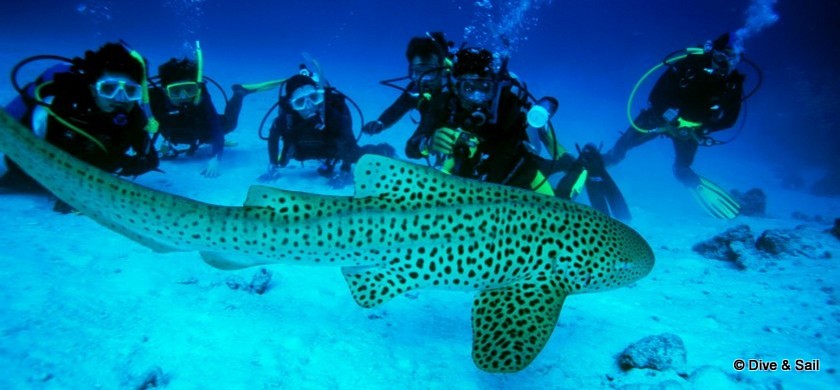
Diving and fishing
The Myeik Archipelago’s diversity above the waves is more than matched by life below the sea surface, showcasing an incredible variety of marine life – including Nurse, Grey Reef, and Bull sharks, as well as Eagle and Manta rays, Frogfish, Ribbon Eels and False Pipefish, to name just a few.
As with the islands, we have only listed a select few of the diving highlights here – there are dozens of fascinating and exciting sites throughout this vast area.
- The Burma Banks. One of the most renowned dive sites in Southeast Asia, the huge Burma Banks (including Silvertip, Rainbow, Roe, Coral and Heckford banks) are located on the west side of the archipelago, where the continental shelf drops off into the deep sea beyond. For experienced divers, the open ocean diving here makes for a thrilling and diverse opportunity – and sightings of sharks are virtually guaranteed.
- Black Rock. This islet, located 100 miles northwest of Kawthaung, is a firm favourite of many divers who visit the archipelago: its steep rock cliffs act as a magnet for an abundance of marine life – most notably Silvertip, Whitetip and Blacktip sharks, as well as Manta rays and Sting rays.
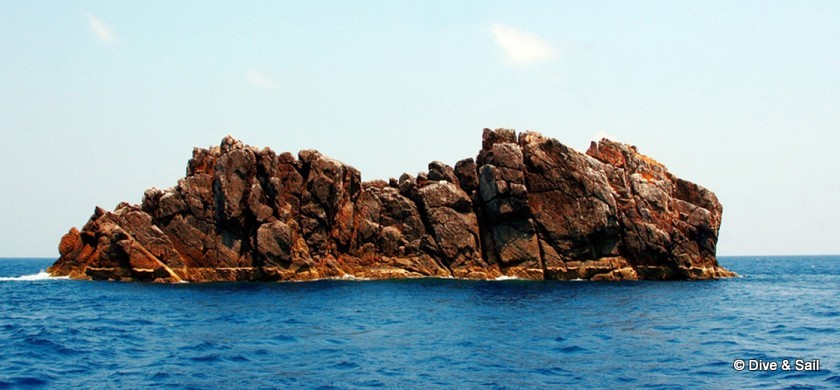
- Shark Cave. Featuring three rocks that rise from 40 meters under the surface until they rise above waves, this area offers some of the best marine life in the archipelago, with huge shoals of colourful fish swimming around you – and it is so big it cannot all be seen in one dive. For experienced divers, there is a huge canyon to explore on the middle island, which leads to a cave which is guarded by Grey Reef sharks which sometimes lose their inhibition and swim up close to divers.
- Little Torres Islands. A mix of spectacular red whip, mosaic and table corals can be found in the waters surrounding these islands, as well as Batfish and beautifully-colured Moon Wrasse.
Fishing in the archipelago
Whether it's barracuda, Spanish mackerel, tuna, snapper, or even marlin and sailfish, the archipelago offers the opportunity to enjoy catching your own dinner! Many of the boats that sail here have their own fishing rods, but you are also free to bring your own. Local fishermen also catch cuttlefish and squid, which will often be bought by cruise boat crews and served fresh.
When to visit and sailing conditions
As with much of the rest of Myanmar, November to April is the high season for visiting the Myeik Archipelago. December to February offers the most beautiful and comfortable weather conditions – with warm, sunny weather, steady winds, and calm seas. There is less wind and higher temperatures in March and April, which also makes for clearer waters and the best time for diving and snorkeling.
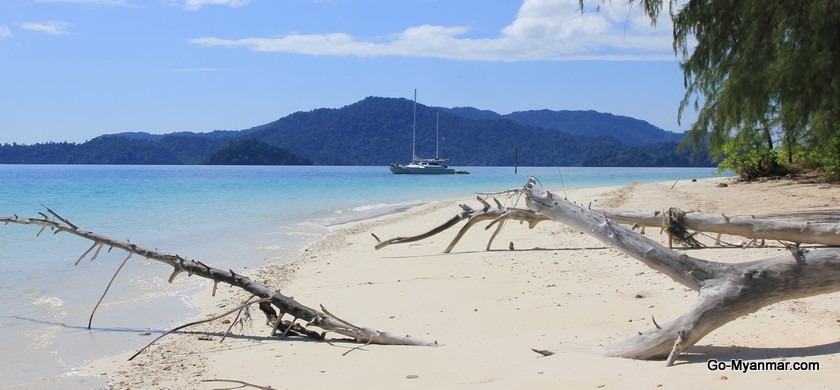
From May to July there are strong onshore winds and a larger swell (with occasional hurricanes) and the rainy season is from June to October; cruises of the Archipelago do not operate from the beginning of May until the beginning of October. If storms do arrive during the monsoon, the region has numerous large islands which provide protected anchorages at any time of year – and in general the area provides safe sailing, with few dangerous reefs or obstacles.
To see cruise options for the Myeik Archipelago, including diving tours and tours of wider Myanmar that include the Archipelago, click here.
Permits, access and places to stay
A special permit is required to visit the Myeik Archipelago on a multi-day live aboard tour - it is obtained as part of a cruise package; processing is straightforward, but usually takes around one month to complete. It is not currently permitted for foreigners to travel to the islands independently, and there are naval patrols through the islands that check visitor documentation.
Taking a multi-day cruise, you will typically be met at Kawthaung airport by a representative, who will talk you through the deskful of required paperwork and then take you on to your boat. Most cruises have a set itinerary, although this can change if the weather is poor. The crew will provide alternative places of interest, and you will have a guide to explain everything to you and to translate for conversations with the islanders.
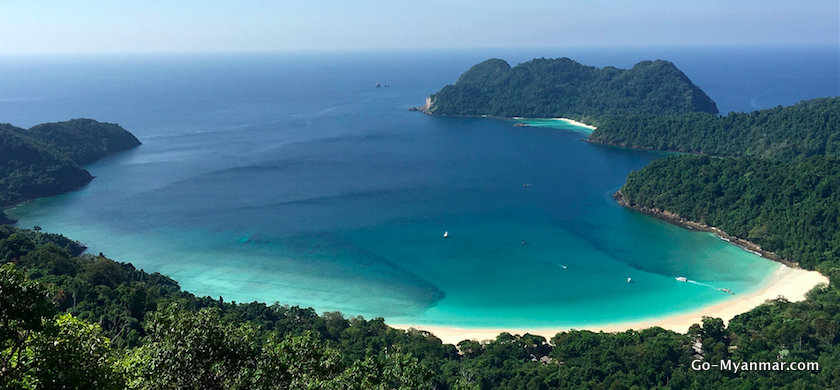
There are three main places to stay on the islands of the archipelago, all at the southern end to the west of Kawthaung: the Myanmar Andaman Resort on MacLeod Island; the nearby Nyaung Oo Phee Resort, with luxury tent-style lodging; and the further out Boulder Bay Eco Resort on Boulder Island. They are open from October to the end of April and offer their own, limited, boat transport to the mainland - if you wish to arrange your own transport, it is very expensive. The Grand Andaman Hotel, a Thai-owned, casino-focused hotel caters mostly to Thais and is located on an island across the water from Kawthaung.
It is now also possible to go on day trips to the archipelago from Kawthaung and from the town of Myeik, further north - as well as multi-day trips with overnight camping on the islands. These are fun (and cheaper than live-aboard multi-day cruises) but it can take a long time to get to the outlying islands.
To find out more about any of these trip options, get in touch with us via our contact form.







